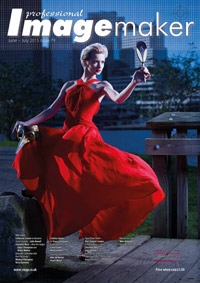articles/Competitions/how-to-score-page1
How to Score Your Best in Image Competitions - part 1 of 1 2 3 4
by Jane Conner-ziser Published 01/06/2015
Degrees of Photographic Excellence require that your work is recognised and rewarded by your professional peers for both artistic and technical excellence. It seems easy for some people to earn Golds or Merits, but for most of us, it's a lot of hard work that often doesn't pay off the way we hoped it would. Sometimes our images almost make it, but pushing them that last couple of points seems almost impossible to achieve. I'd like to share some hints that I've learned during my many years of working with exhibition imaging.
1. Shoot to win. Some image makers select their competition images from client sessions (great for them!) but most plan and shoot for competition because the end goals are different. Clients care about nice expressions, wall appeal and clothing, props and environments that are personally meaningful. Judges care about emotional impact, composition, lighting, body posture, color harmony, clothing and prop choices, image quality, expression, artistic and technical mastery, quality of retouching, and image presentation. One of my wise friends once said, "I can't serve two Masters simultaneously. I can serve my client, or I can serve myself, but in trying to serve both, I give neither my best." It is true for me as well; when I photograph clients, I'm trying to give them what they want and need. When I photograph for myself I want what I want.
2. Select the right images with a critical and impartial eye, and if you can't do it, get other people to help you. Judges don't know your cute children and they can seem quite harsh in critiquing images that are emotionally important to you. They don't care how hard it was for you to get the shot, what limitations you were working with in equipment and lighting, or what was there that prevented you from composing it perfectly. Many successful competitors form small groups of peers to share ideas and images with on a regular basis, and though the final selections are your decision to make, it's easier when you have the input of others to consider with what you think and feel yourself. If you know that you have a fatal flaw in your image, don't enter it hoping that the judges won't notice. They will. If you have to reshoot, do it.
It is important to know the judging criteria for the competition in order for you to select images that will powerfully fulfill each point of criteria. Here are some links to two of the top world image competitions' judging criteria for you to consider when selecting images that will do a good job for you:
http://www.ppa.com/competitions/content.cfm?ItemNumber=1792
http://www.swpp.co.uk/photographic-competitions/what-the-judgesare- looking-for.htm
If you have the opportunity to look at previous winning images, do so - check out the competition and get a feel for what the judges like. A great image is a great image regardless of where it's viewed but the PPA judging typically leans to classic while the SWPP is more avant garde. It is common for high-scoring images from one association's judging not to do well in the other (but by no means universal! Ed).
3. Once your images are shot, pre imagine your final images before you start preparing them, from crop to presentation. This doesn't mean you can't let the creation flow, but it's easier to have a general idea of how the underlay and presentation will boost the crop and balance of the image rather than trying to make something fit an already finished image. Don't forget that you can stretch images, add background space and position the underlay off to one side or the other in order to compensate for less than perfect camera crop.
You are currently on page 1
- How to Score Your Best in Image Competitions page 1
- How to Score Your Best in Image Competitions page 2
- How to Score Your Best in Image Competitions page 3
- How to Score Your Best in Image Competitions page 4
1st Published 01/06/2015
last update 09/12/2022 14:55:02
More Competitions Articles
There are 30 days to get ready for The Society of Photographers Convention and Trade Show at The Novotel London West, Hammersmith ...
which starts on Wednesday 14th January 2026





